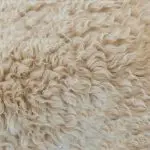Are you tired of being fooled by faux leather? Want to learn how to spot the real deal? Look no further!
In this article, we will guide you through the foolproof techniques to distinguish real leather from faux fabric. From the texture and smell to the inspection of edges and seams, we will provide you with all the tools you need to become an expert in leather identification.
Don’t waste your time and money on imitations – let us show you how to tell the difference!
Table of Contents
Texture and Feel
Real leather has a distinct texture and feel, while faux fabric often feels smoother and less supple. When comparing leather and faux leather, one of the key differences lies in their visual appearance.
Real leather has a natural grain pattern that is unique to each hide, giving it an authentic and organic look. The texture is typically rougher, with visible pores and wrinkles, adding to its charm and character.
On the other hand, faux leather is usually made from synthetic materials like polyurethane or vinyl, which are designed to mimic the appearance of real leather. As a result, faux fabric tends to have a more uniform and consistent texture, lacking the natural imperfections found in genuine leather.
It often feels smoother to the touch and lacks the suppleness and flexibility that real leather possesses. While faux leather may be more affordable and easier to maintain, the visual and tactile differences between the two make it possible to distinguish between real leather and faux fabric with careful observation and touch.
Smell Test
The smell of genuine leather is distinct from that of imitation materials. When it comes to determining if a product is made from real leather or faux fabric, the smell test can be a helpful tool. Genuine leather has a unique, natural scent that is hard to imitate. It has a rich, earthy aroma that is often described as musky or woody. In contrast, imitation materials may have a chemical or synthetic smell. This is because they are typically made from plastics or synthetic fibers.
The smell of real leather is not only distinctive but also a result of the material’s natural durability. Genuine leather is known for its strength and longevity, making it a popular choice for products that require durability, such as shoes, bags, and furniture. Faux fabrics, on the other hand, may not offer the same level of durability as real leather. They are often less resistant to wear and tear, and may require more frequent care and maintenance to keep them looking their best.
To care for real leather, it is important to clean and condition it regularly using products specifically designed for leather care. This helps to keep the material supple and prevent it from drying out or cracking. Faux fabrics, on the other hand, may be easier to clean and maintain, often requiring simple wiping or washing. However, it is important to follow the care instructions provided by the manufacturer to ensure the longevity of the product.
Inspection of Edges and Seams
When inspecting the edges and seams of a leather product, it’s important to look for irregular or frayed edges, as well as loose or uneven stitching. These characteristics can indicate poor craftsmanship and lower quality.
Irregular or Frayed Edges
Inspect the edges closely for any irregularities or fraying to determine if it’s genuine leather or faux fabric. One way to differentiate between the two is by examining the wear and tear on the edges. Genuine leather tends to have smoother, more even edges, while faux fabric may show signs of fraying or unraveling.
Here are three key points to consider when inspecting the edges:
-
Smoothness: Genuine leather edges will have a consistent smoothness and won’t show any signs of fraying or unevenness. Faux fabric, on the other hand, may have rough edges that are prone to fraying.
-
Durability: Real leather edges are more resistant to wear and tear, so they are less likely to fray or deteriorate over time. Faux fabric, being a synthetic material, is more prone to damage and may show signs of fraying or unraveling.
-
Quality of stitching: Pay attention to the stitching along the edges. Genuine leather typically has tight and neat stitching, while faux fabric may have stitches that are more visible or uneven.
Loose or Uneven Stitching
Check for loose or uneven stitching as it can indicate a lower quality material.
When examining a fabric, pay close attention to the stitching. Loose stitching, where the thread is not tightly secured, can be a sign of poor craftsmanship. It suggests that the fabric may not have been stitched together properly, which can lead to unraveling and early deterioration.
Uneven stitching, where the stitches are not consistently spaced or aligned, is another red flag. It indicates a lack of attention to detail and suggests a rushed or careless manufacturing process.
High-quality materials are typically stitched with precision, with each stitch evenly spaced and tightly secured. So, when checking for authenticity, remember to scrutinize the stitching for any signs of loose or uneven threads.
Examination of Pores or Patterns
When examining pores or patterns, you can distinguish between real leather and faux fabric by looking for key differences in pore size. Real leather typically has smaller and more irregular pores, while faux fabric often has larger and more uniform pores.
Additionally, pattern consistency analysis can be a helpful tool in determining authenticity. Real leather tends to have a more natural and random pattern, whereas faux fabric may have a repeating or artificial pattern.
Pore Size Differences
You can easily spot the difference between real leather and faux fabric by feeling the pore size. Real leather has a distinct pore size that is a result of the natural aging process. As leather ages, the pores become more pronounced and develop a unique pattern.
Faux fabric, on the other hand, often lacks this natural aging effect and has a more uniform pore size. To determine the pore size, simply run your fingers over the surface of the material. Real leather will have a slightly rougher texture due to the larger and more irregularly shaped pores.
Faux fabric, on the other hand, will feel smoother and more consistent in pore size. By paying attention to these details, you can easily differentiate between real leather and faux fabric.
Pattern Consistency Analysis
The texture of real leather develops a unique pattern as it ages, while faux fabric typically lacks this consistency. When examining the pattern of real leather, you’ll notice a natural variation that tells a story of its life. Here are some details to help you analyze the pattern and distinguish between real leather and faux fabric:
- Subtle creases: Real leather will have small creases that form over time, giving it a natural and authentic appearance.
- Vein-like lines: Look for faint lines that resemble veins running through the surface of the leather. These lines add depth and character to the material.
- Color variations: Real leather often exhibits slight variations in color, which is a result of natural processes and the aging of the material.
- Imperfections: Real leather may have small imperfections like scars or blemishes, which are signs of its authenticity.
Faux Fabric Texture Examination
Now that you have learned about analyzing pattern consistency, let’s move on to another important aspect of differentiating between real leather and faux fabric: texture examination.
Visual differences in texture can provide valuable clues about the material you are dealing with. When examining the texture, pay attention to the surface of the material. Real leather tends to have a more natural and irregular texture, with variations in grain patterns and wrinkles.
On the other hand, faux fabric often has a more uniform and consistent texture, lacking the unique imperfections of real leather. Durability and maintenance are also important factors to consider.
Real leather is known for its durability and ability to withstand wear and tear over time. It requires proper care and maintenance, such as regular cleaning and conditioning. Faux fabric, on the other hand, may not be as durable and may require less maintenance.
Flexibility and Stretchability
Leather has more flexibility and stretchability than faux fabric. When it comes to elasticity, leather is known for its natural ability to stretch and mold to your body over time. This is due to the unique composition of leather, which consists of collagen fibers that allow it to retain its shape while still being pliable. Faux fabric, on the other hand, lacks the same level of elasticity as leather. It may have some stretch, but it is often limited and does not have the same ability to conform to your body like leather does.
In terms of durability, leather also has the upper hand. The natural fibers in leather make it more resistant to wear and tear compared to faux fabric, which is usually made from synthetic materials. Leather can withstand daily use and is known for its longevity, while faux fabric may show signs of wear and tear more quickly.
When examining the flexibility and stretchability of a material, leather’s superior qualities become apparent. Its ability to stretch and mold to your body, combined with its durability, make it a popular choice for many products, including clothing, accessories, and furniture.
Price and Brand Comparison
If you’re on a budget and looking for a good deal, comparing prices and brands is essential. When it comes to purchasing items like furniture, clothing, or accessories made from leather or faux fabric, it’s important to consider both the price and the brand.
Price can often be an indicator of the quality and durability of the product. Higher-priced items are typically made from genuine leather, which is known for its durability and longevity. On the other hand, lower-priced items are usually made from faux fabric, which may not be as durable or long-lasting.
When comparing brands, it’s important to look for reputable and well-known names in the industry. Established brands often have a reputation for producing high-quality products that are built to last. Additionally, you may want to consider reading customer reviews and ratings to get an idea of the overall satisfaction and durability of the product.
Regardless of whether you choose leather or faux fabric, proper care and maintenance are essential for keeping your item in good condition. For leather, regular cleaning with a leather cleaner and conditioner can help maintain its softness and prevent cracking or drying. Faux fabric can be cleaned with a mild soap and water solution, but it’s important to avoid harsh chemicals that can damage the material.
Conclusion
In conclusion, determining whether a material is real leather or faux fabric can be done by following a few simple steps.
By examining the texture and feel, conducting a smell test, inspecting the edges and seams, examining the pores or patterns, and testing the flexibility and stretchability, you can make an informed decision.
Additionally, comparing the price and brand can give you further clues.
Remember to trust your instincts and use these techniques to ensure you are purchasing genuine leather.
- How Does Ring Spun Cotton Affect Garment Fit and Shape Retention? - August 13, 2024
- What Are the Challenges in Producing Ring Spun Cotton? - August 13, 2024
- Is Ring Spun Cotton Suitable for Plus-Size Clothing? - August 13, 2024



